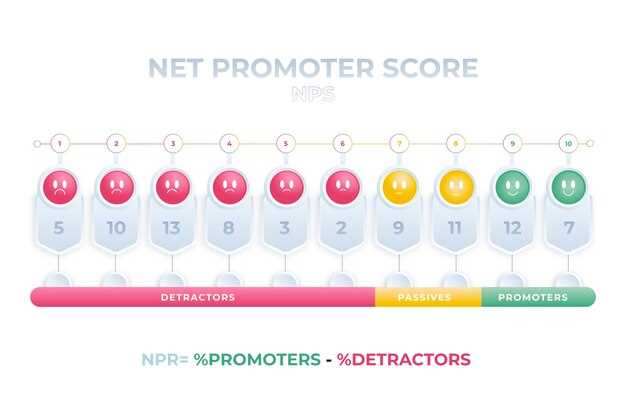
Are you struggling to manage your blood pressure effectively? It’s time to discover the key to better control with Perindopril. Designed to enhance and stabilize your cardiovascular health, Perindopril is a game-changer when it comes to managing hypertension.
When comparing Perindopril to other popular blood pressure medications like Lisinopril, one thing stands out – Perindopril’s superior efficacy. With its unique combination of powerful ingredients, Perindopril ensures that your blood pressure stays within the target range consistently.
Don’t just settle for partial control. Perindopril empowers you with the ability to take charge of your health and reduce your risk of serious complications. Say goodbye to the limitations of other medications and embrace the benefits of Perindopril.
Unlock the power of blood pressure control. Experience the difference that Perindopril can make in your life today. Take the first step towards optimal cardiovascular health and start your journey towards a better future.
Background Information
Understanding the similarities and differences between Perindopril and Lisinopril can help patients make informed decisions about their medication choices and ensure that they are receiving the most appropriate treatment for their specific needs.
By providing a comprehensive analysis of these two medications, the purpose of this article is to educate readers about Perindopril and Lisinopril, their similarities, and differences, thus helping them to have a better understanding of their options when it comes to managing their cardiovascular health.
Purpose of the Article
The purpose of this article is to provide a detailed comparison between the two commonly prescribed medications, Perindopril and Lisinopril. By examining their similarities and differences, individuals can make informed decisions about which medication may be more suitable for their particular medical needs. The article aims to provide comprehensive information about these drugs, their uses, potential side effects, and overall effectiveness.
Scope of the Comparison
The scope of this comparison will focus on evaluating various aspects of Perindopril and Lisinopril, including their mechanism of action, therapeutic uses, dosages, potential side effects, and any notable precautions or warnings that should be considered. By examining these factors, individuals can better understand the similarities and differences between these medications and make informed choices based on their specific medical condition and other factors deemed relevant to their treatment plan.
Scope of the Comparison
In this comparison, we will focus on Perindopril and Lisinopril, two commonly prescribed medications used to treat high blood pressure, also known as hypertension. We will explore the similarities and differences between these two medications, including their mechanisms of action, side effects, dosage forms, and effectiveness in lowering blood pressure.
What is Perindopril?
Perindopril is a medication that belongs to a class of drugs called ACE inhibitors, which stands for angiotensin-converting enzyme inhibitors. It is commonly used to treat high blood pressure (hypertension) and heart failure. Perindopril works by relaxing and widening the blood vessels, which helps to lower blood pressure and improve blood flow.
How does Perindopril work?
Perindopril works by blocking the action of an enzyme called angiotensin-converting enzyme (ACE). This enzyme is responsible for converting a hormone called angiotensin I into angiotensin II. Angiotensin II is a powerful vasoconstrictor, or substance that narrows the blood vessels. By blocking the action of ACE, Perindopril helps to reduce the levels of angiotensin II in the body, which results in the relaxation and widening of the blood vessels. This helps to lower blood pressure and improve blood flow to the heart and other organs.
What are the uses of Perindopril?

Perindopril is primarily used to treat high blood pressure (hypertension) and heart failure. It may also be prescribed to reduce the risk of heart attack, stroke, and other cardiovascular events in patients with a history of cardiovascular disease. Additionally, Perindopril may be used in combination with other medications to manage certain kidney conditions.
Perindopril is available in tablet form and is typically taken once daily. The dosage may vary depending on the individual and their specific medical condition. It is important to take Perindopril as prescribed by a healthcare professional and to follow their instructions closely.
As with any medication, Perindopril may cause side effects in some individuals. Common side effects may include dizziness, headache, cough, and gastrointestinal symptoms such as nausea and vomiting. It is important to report any persistent or severe side effects to a healthcare professional.
In conclusion, Perindopril is a medication used to treat high blood pressure, heart failure, and other cardiovascular conditions. It works by relaxing and widening the blood vessels, which helps to lower blood pressure and improve blood flow. If you have been prescribed Perindopril, it is important to take it as directed and to consult with your healthcare professional if you have any questions or concerns.
Comparison of Perindopril and Lisinopril
Perindopril and Lisinopril are both medications belonging to the class of angiotensin-converting enzyme (ACE) inhibitors. They are commonly prescribed for the treatment of high blood pressure and heart failure. While they have similar uses and mechanisms of action, there are some differences between the two medications that are important to consider.
Efficacy and Effectiveness

Both Perindopril and Lisinopril have been proven to effectively lower blood pressure and improve cardiac function in patients with hypertension and heart failure. They work by inhibiting the ACE enzyme, leading to the dilation of blood vessels and a reduction in the production of angiotensin II, a hormone that causes vasoconstriction.
However, studies have shown that Perindopril may have a slightly greater effect on reducing blood pressure compared to Lisinopril. This may be due to differences in how the medications are metabolized in the body and their pharmacokinetic properties.
Tolerability and Side Effects
Both Perindopril and Lisinopril are generally well-tolerated by most patients. However, as with any medication, there is a potential for side effects. Common side effects that may occur with Perindopril and Lisinopril include cough, dizziness, headache, and gastrointestinal disturbances.
It is important to note that Lisinopril has been associated with a higher incidence of a side effect known as angioedema, which involves swelling of the lips, face, tongue, or throat. Although this side effect is rare, it can be severe and potentially life-threatening. Therefore, caution should be exercised when prescribing Lisinopril to patients with a history of angioedema.
Overall, both Perindopril and Lisinopril are effective medications for the treatment of hypertension and heart failure. However, Perindopril may have a slightly greater effect on reducing blood pressure, while Lisinopril has been associated with a higher risk of angioedema. Therefore, the choice between the two medications should be based on individual patient characteristics and the presence of any risk factors.
Always consult with a healthcare professional before starting or changing any medication regimen.
Comparison of Perindopril and Lisinopril
Perindopril and Lisinopril are both medications in the class of ACE inhibitors, which are commonly used to treat high blood pressure and heart failure. While they work in a similar way, there are some key differences between the two medications.
Effectiveness
Both Perindopril and Lisinopril have been shown to effectively lower blood pressure and improve symptoms of heart failure. However, studies have shown that Perindopril may have a slightly greater effect on reducing blood pressure compared to Lisinopril.
Side Effects
Both medications can cause similar side effects, such as dizziness, cough, and headache. However, certain side effects may be more common with one medication compared to the other. For example, Lisinopril may have a higher risk of causing a persistent dry cough compared to Perindopril.
It is important to discuss any potential side effects with your doctor before starting either medication.
Dosing and Administration
While both Perindopril and Lisinopril are taken orally, their dosing and administration may differ. Perindopril is typically taken once daily, while Lisinopril may be taken once or twice daily depending on the prescribed dose. Additionally, the starting dose and titration schedule may vary between the two medications.
Cost
The cost of Perindopril and Lisinopril can vary depending on factors such as the formulation, strength, and quantity prescribed. It is advisable to check with your insurance provider or pharmacy for the most up-to-date information on cost and coverage.
In conclusion, while both Perindopril and Lisinopril are effective medications for treating high blood pressure and heart failure, they may differ in terms of effectiveness, side effects, dosing, and cost. It is important to work closely with your healthcare provider to determine which medication is best for you.
Similarities between Perindopril and Lisinopril
Perindopril and Lisinopril are both angiotensin-converting enzyme (ACE) inhibitors that are commonly prescribed to treat high blood pressure and heart failure. Despite being different drugs, they have several similar characteristics:
1. Mechanism of Action: Both Perindopril and Lisinopril work by inhibiting the enzyme ACE, which reduces the production of angiotensin II. Angiotensin II is a hormone that constricts blood vessels and increases blood pressure. By blocking its production, both medications help relax and widen blood vessels, resulting in lower blood pressure.
2. Indications: Perindopril and Lisinopril are indicated for the treatment of several cardiovascular conditions, including hypertension (high blood pressure) and heart failure. They can be used alone or in combination with other medications to control blood pressure and improve heart function.
3. Efficacy: Clinical studies have shown that both Perindopril and Lisinopril are effective in reducing blood pressure and improving cardiovascular outcomes. They have been shown to reduce the risk of stroke, heart attack, and heart failure in patients with hypertension and heart disease.
4. Safety: Both medications have a similar safety profile, with common side effects including dizziness, headache, cough, and fatigue. In rare cases, they can cause more severe side effects such as angioedema (swelling of the face, lips, tongue, or throat) and kidney problems. It is important to take these medications as prescribed and to report any unusual symptoms to a healthcare provider.
5. Dosage Forms: Perindopril and Lisinopril are available in various dosage forms, including tablets and oral solutions. The dosage and frequency of administration may vary depending on the patient’s condition and other factors. It is important to follow the prescribed dosage and instructions for use.
6. Precautions: Both medications should be used with caution in patients with a history of angioedema, kidney disease, or liver disease. They may also interact with other medications and should be used with caution in patients taking diuretics or non-steroidal anti-inflammatory drugs (NSAIDs).
Overall, Perindopril and Lisinopril share several similarities in terms of their mechanism of action, indications, efficacy, safety, dosage forms, and precautions. However, it is important to consult a healthcare provider to determine which medication is most suitable for individual needs and to ensure safe and effective treatment.
Differences between Perindopril and Lisinopril
Perindopril and lisinopril are both ACE inhibitors commonly used to treat hypertension and heart failure, but they differ in several ways:
| Factor | Perindopril | Lisinopril |
|---|---|---|
| Chemical Structure | Sulfhydryl group | Carboxyl group |
| Route of Administration | Oral | Oral |
| Half-life | 3-6 hours | 12-24 hours |
| Dosage Frequency | Once daily | Once or twice daily |
| Metabolism | Hepatic | Renal |
| Excretion | Biliary and renal | Renal |
| Approved Indications | Hypertension, heart failure, stable coronary artery disease | Hypertension, heart failure, acute myocardial infarction |
| Side Effects | Cough, dizziness, hypotension | Cough, dizziness, hypotension |
These differences in chemical structure, pharmacokinetics, and approved indications may impact the choice of ACE inhibitor for individual patients. It is important to consult with a healthcare professional to determine the most appropriate option based on the patient’s specific needs and medical history.
